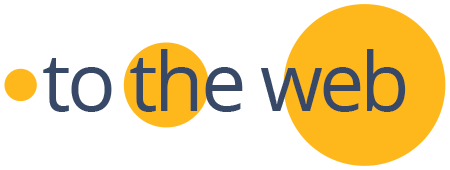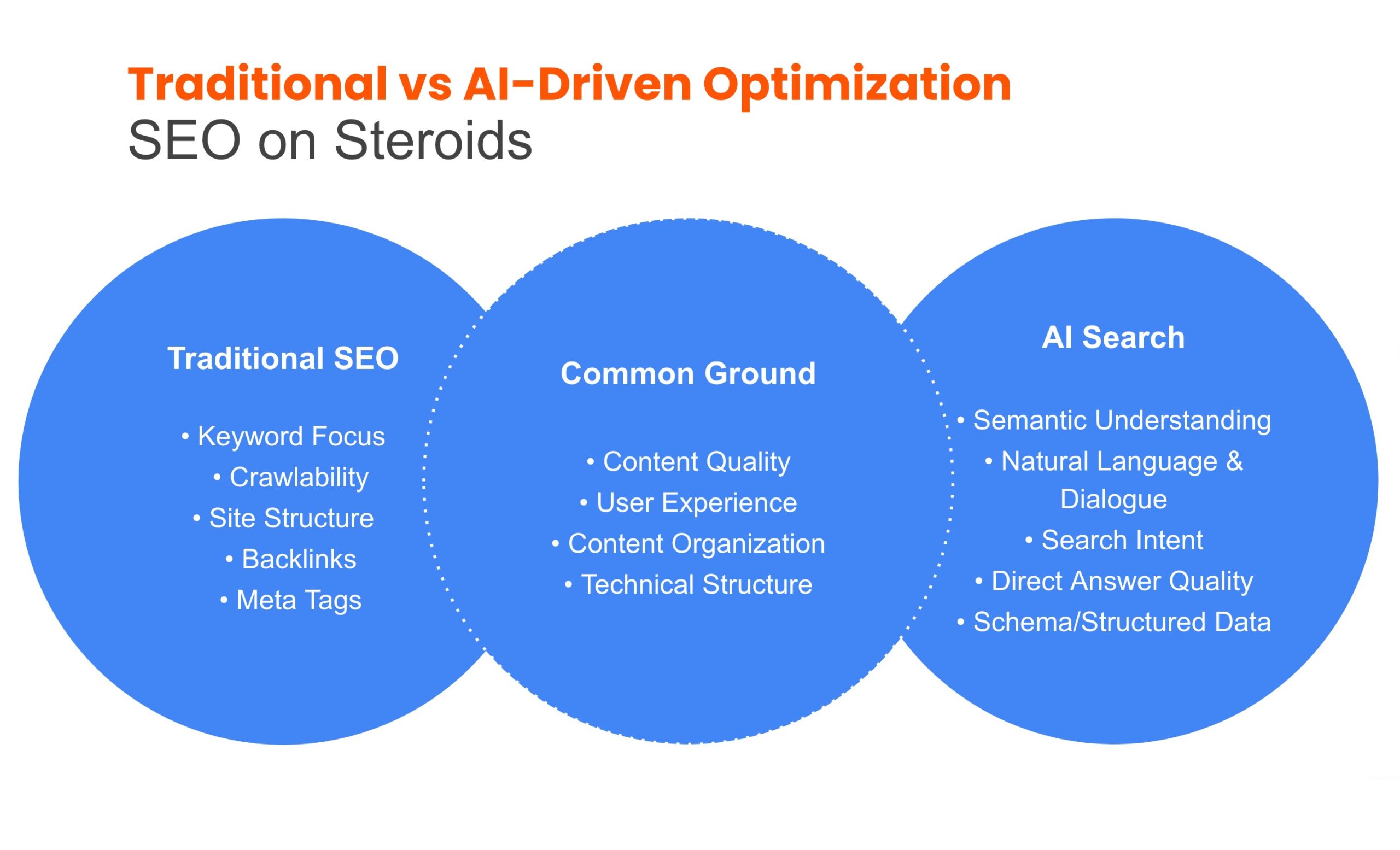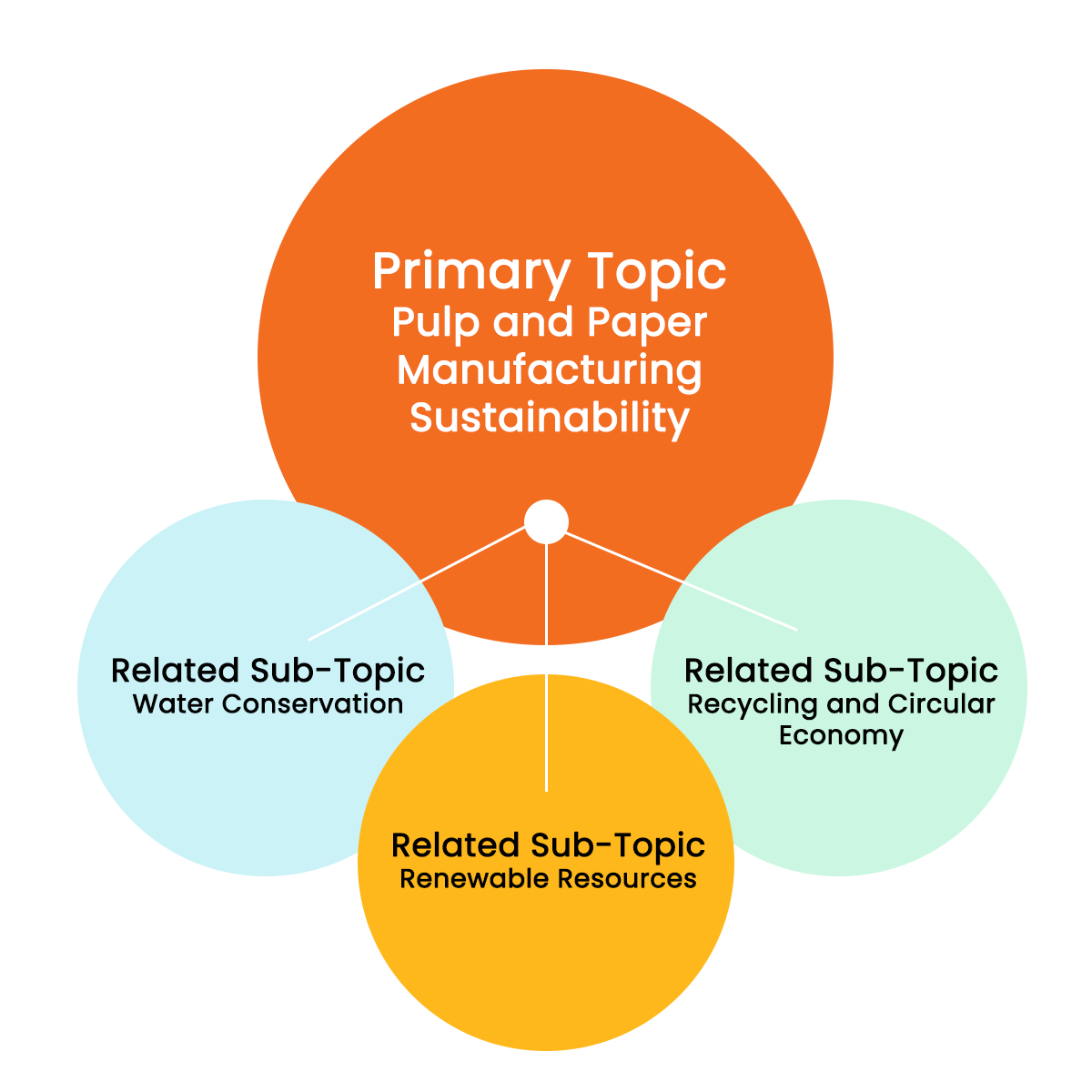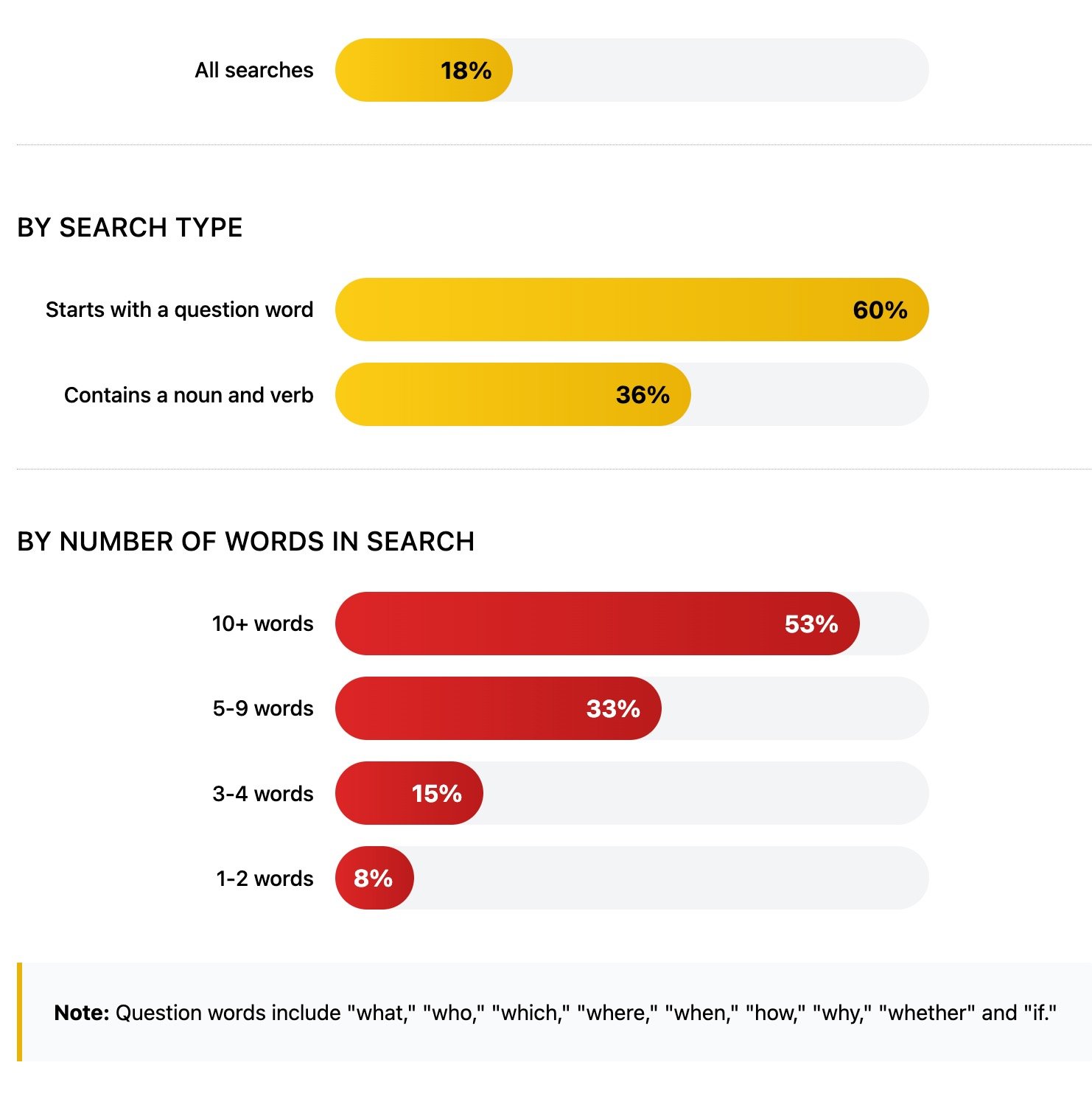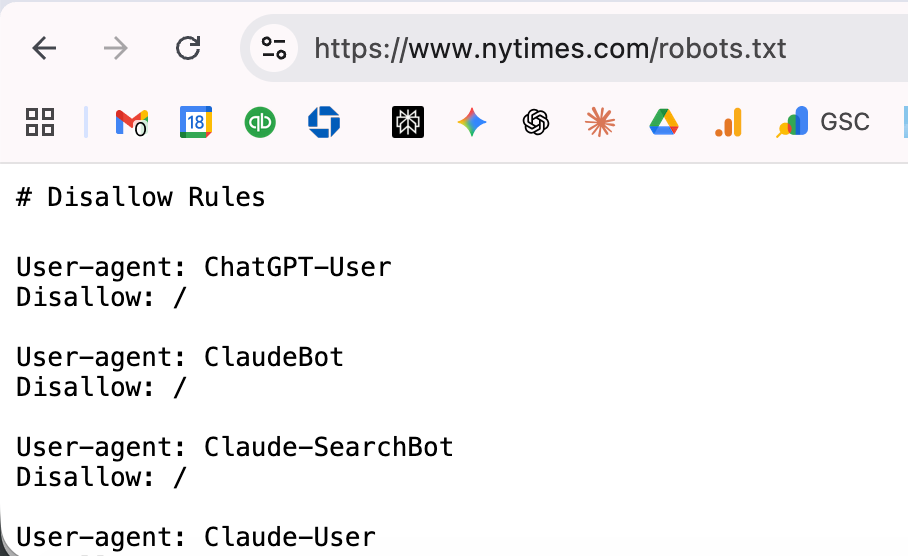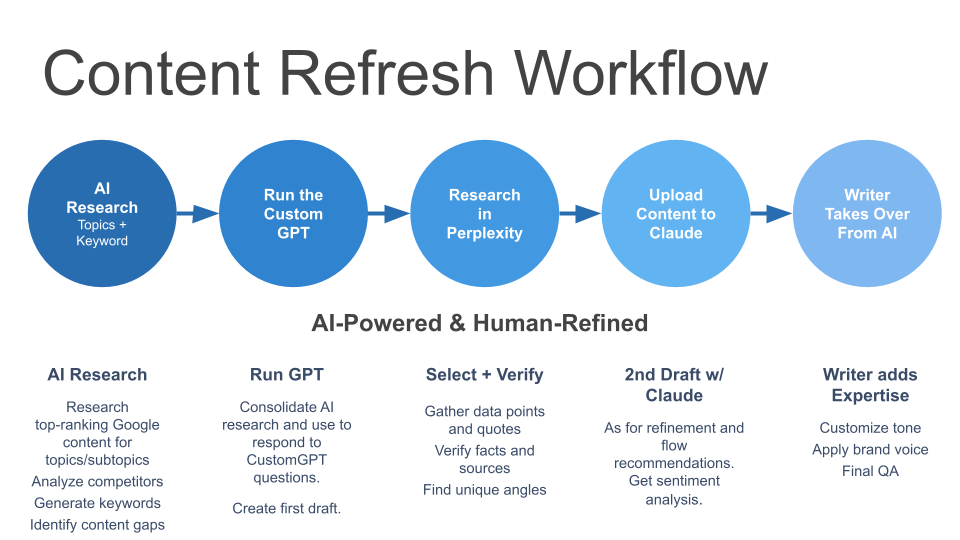Beyond SEO: Your GEO Checklist for Answer Engines
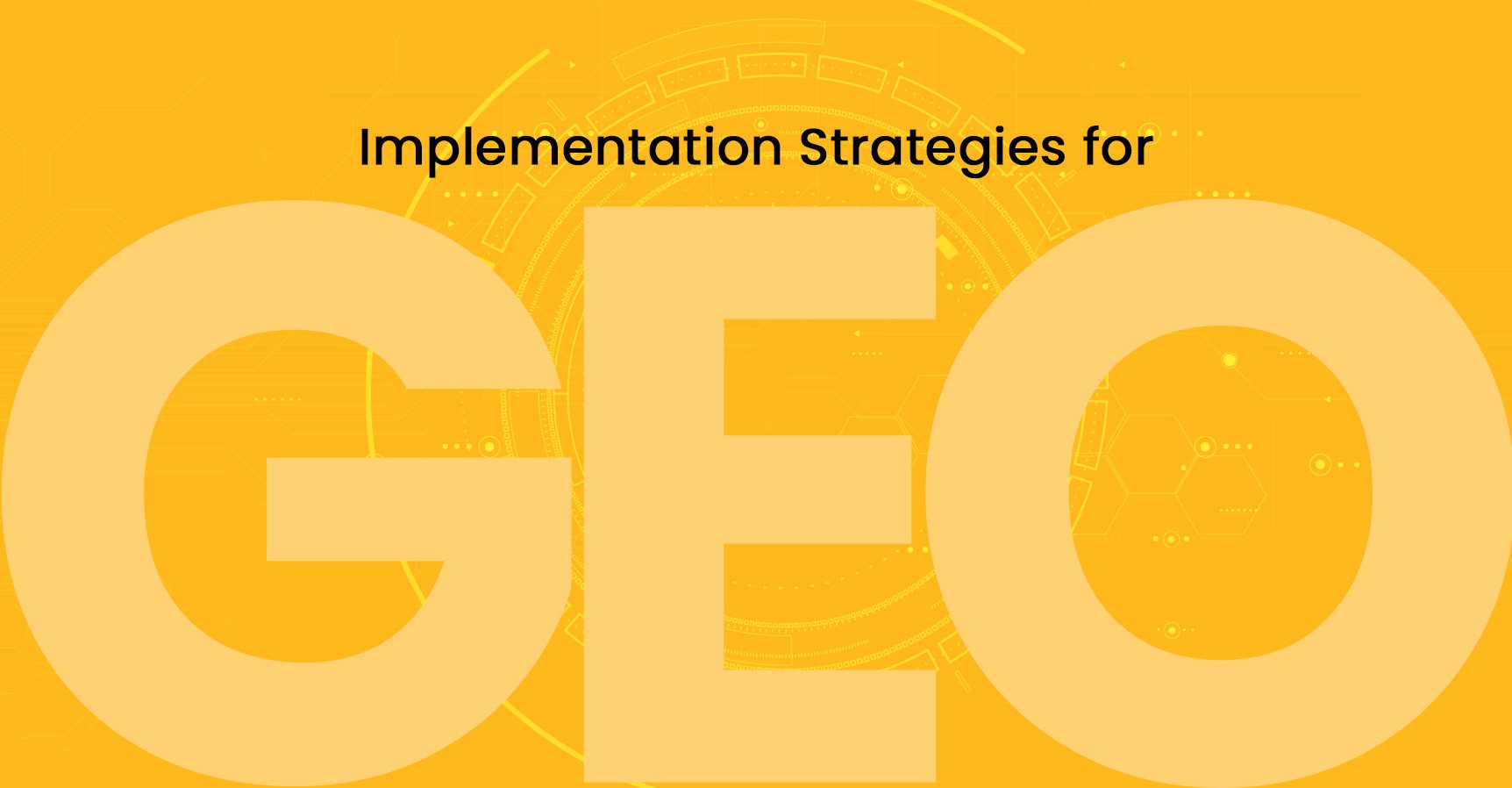
AI now decides what gets seen online.
If your pages don’t deliver clear, complete answers, you won’t show up when buyers research. This checklist shows how to make your content easy for AI to understand, cite, and surface.
To earn visibility, you need content that’s structured for AI.
Lead with clear answers, state facts plainly, and show strong authority signals.
SEO doesn’t go far enough.
I watched the rules change overnight when platforms like Gemini and ChatGPT started pulling responses, summarizing content, and citing sources completely differently.
To make the buyer’s shortlist, focus on organization and clarity.
Use descriptive headings, and on-page FAQs and embed schema markup. Cite trustworthy sources. These steps help generative engines understand—and surface—your content.
Harvard Business Review agrees — it’s time to rethink SEO: Forget What You Know About SEO
What does it take to rank in AI search results?
Use this Answer Engine Optimization checklist to create content that performs in generative engines like ChatGPT, Gemini, and Perplexity. From structure to summaries, you’ll learn exactly what it takes to be featured in AI-generated answers.
Why does this matter?
When AI systems clearly understand your content, they’re more likely to share it accurately—and more often. Which means more visibility for you.
These guidelines show you how to optimize for AI comprehension while keeping human readers engaged. Learn how people actually read online.
Benchmark study based on 10,000 queries
Top-performing optimization tactics that consistently delivered better results than the baseline. Source
- Cite highly credible sources
- Use quotable, memorable phrasing
- Write with a natural, human-like flow
- Include key technical terms and relevant language
- Adopt a confident, expert tone
The New Rules
SEO helped us reach human readers through Google. But AI platforms need a new approach—enter Generative Engine Optimization (GEO) and Answer Engine Optimization (AEO). Here’s how they differ.
GEO vs. AEO: Strategy vs. Execution
AEO—Answer Engine Optimization—is the strategy. It starts with a core principle: AI can’t surface what it doesn’t understand. It helps generative engines understand, summarize, and include your content in their responses.
GEO—Generative Engine Optimization—is the execution. It turns that strategy into action. By stressing semantic clarity, contextual depth, and AI‑friendly language, GEO makes content discoverable and usable in AI answers.
In short: AEO sets the strategy; GEO executes it.
I’m going to use both names interchangeably so we don’t get tangled up in acronyms. 😎
Your Action Plan for GEO Success
PLAN IT
Make Your Content AI-Ready from the Start
- Write in modular, answer-focused sections
Break your content into short, focused sections—each answering a single question in 75–300 words. AI engines pull answers in chunks, so make sure each section delivers value on its own. - Group related topics to show AI your expertise
Organize your content into topic clusters. Link related pages to reinforce your expertise and help AI engines understand how your content pieces fit together. (see graphic below) - Plan for follow-up questions
AI search often happens in stages, with users digging deeper in the same session. Structure your content to answer the initial query, then address likely next questions or related topics. This increases your chances of appearing across multiple steps in the user’s search journey. - Use specific names, not generic terms
Mention your brand, products, people, and partners by name. This helps AI systems connect your content with recognized entities.
STRUCTURE IT
LLMs Don’t See Full Web Pages When You Prompt Them
At prompt time, they receive a short snippet such as the title, URL, and one or two lines of text. If more context is needed, they load limited slices of plain text, not full HTML.
- Put your answer first because AI sees only fragments.
Place your key answers, stats, and claims high on the page in clear, structured blocks. State outcomes in straightforward language. Example: “Company X cut fraud by 35% in 12 months.”
- Put your answer first because AI sees only fragments.
Avoid burying facts in marketing copy because AI struggles to extract facts hidden inside promotional language.
- Write headers that sound like real questions
Format your subheadings as questions people actually ask. This helps generative engines recognize and reuse your content when answering similar user queries. - Add descriptive alt text—but only for images with data or key insights
Focus on images that show facts, processes, or results. For example, instead of saying “dashboard screenshot,” describe what the dashboard shows: “Graph showing 35% fraud reduction over 12 months.” - Use schema markup – it’s your direct line to AI systems
This is one of the highest-impact changes you can make for AI visibility.
Add FAQ, HowTo, or Product schema where it makes sense. Structured data helps AI engines understand your content’s format and key sections—making it easier for them to extract and surface your information in answers. See structured data and schema markup.
TEST IT
See If Your Content Shows Up in AI Answers
- Check your visibility in AI engines
Test both category searches (“Top [product type] platforms”) and branded questions (“What does [your company] do?” or “How does [product] compare to [competitor]?”). Search monthly using tools like ChatHub. If you don’t appear or the information is wrong, update your About page, product descriptions, or comparison content.
Generative Engine Optimization (GEO)
Explore GEO services and pricing to improve your AI visibility.
Step-by-Step Content Optimization for AI Search
Here’s what works—the steps that get your content noticed, understood, and quoted by AI engines.
Content That AI Systems Love
1. Write Page Titles People Actually Search For
Your page title is what shows up in search results and browser tabs.
Why it matters: It’s how both people and AI figure out what your page covers.
Best Practice: Make every page title unique and focused. Summarize your content’s value clearly—without repeating exact phrases from the body text. Use our free tool to visualize your meta data.
2. Create In-Depth, Comprehensive Content
Your content needs to answer real questions with clear facts, insights, and explanations. Think comprehensive coverage—typically 1,500 words or more.
Skip the surface-level stuff. AI search rewards unique data, expert insights, and actionable comparisons. Pages that actually help users understand, decide, or solve problems win.
What to include:
- Multiple perspectives on the topic
- Real examples and case studies
- Cite data that backs up what you’re saying
- Plain-English definitions instead of jargon
- Your own frameworks, tips, or templates
Example: Instead of a thin overview on “What is cloud computing?” dive deep with sections on service types, implementation strategies, costs, and security. Reference specific examples from AWS, Azure, or Google Cloud—not generic advice.
3. Make Your Text Easy for LLMs to Read — and Quote
AI models don’t browse—they extract. If your content isn’t structured for machines to understand, it won’t get quoted.
LLMs struggle with long sentences and dense paragraphs.
Peer-reviewed studies show that clarity wins. Stick to short sentences (15–20 words), and write in simple, natural language.Write in short, factual blocks (2–4 sentences/paragraph)
Use formatting that machines understand:
- Use H2s and H3s to separate ideas clearly
- Create FAQs and question-based headings to boost snippet potential
- Add bullets, bold terms, and clear formatting
- Include clear captions—these help AI summarize your visuals and make content more accessible to all readers.
How do you write a “citation-ready” paragraph?
Follow these steps to be cited in AI Answer Engines.
LLMs work best when they can quote and reference sources, not when they have to generate everything from scratch.
That means your writing should be self-contained, high-confidence, and context-independent.
To make your content citation-ready for LLMs, aim for short, structured paragraphs—about 60–100 words each. That’s enough space to explain a single idea with clarity.
Sentences should be no longer than 15-20 words each. This helps models parse meaning cleanly and improves the odds your content will be quoted directly in AI-generated answers.
Here’s a simple structure that helps:
Start with the answer.
Give a direct, declarative statement.
Add supporting detail.
Offer brief clarification, context, or an example.
Reinforce the key point.
End by paraphrasing the main idea using different words.
❌ Too Vague
Integrating Stripe into your platform is a good way to streamline payments and improve the user experience.
✅ Citation-Ready
Stripe helps B2B platforms accept ACH, card, and real-time payments through a single API. It automates invoicing, tax, and billing. Stripe also handles KYC and compliance, reducing risk as businesses scale across industries and geographies.
See the difference?
This structure works best when paired with language that’s easy to read, easy to quote, and unmistakably human.
Use natural, conversational language—the way you’d speak. Skip the corporate jargon and buzzwords. Say “buy” instead of “make a purchase,” and “use” instead of “utilize.” AI engines process direct, plain language better than bloated copy.
4. Focus on Topic Relevance—Not Keywords
AI systems work differently than traditional search engines. They focus on natural language patterns and topic relevance, not exact keyword matches.
Write like you talk. Use different ways to describe the same concept—the way people naturally do in conversations. Spread these variations across your page, but don’t force awkward repetition.
Keep your language varied and authentic. Clear communication beats keyword stuffing every time.
Example: When writing about “digital marketing strategies,” you might naturally mention phrases like “online marketing tactics” or “ways to reach your audience online.”
5. Cover the Full Buyer Journey—So AI Can Too
Your content should guide people through their entire decision process:
- Awareness: Explain the basics.
- Consideration: Help users compare solutions.
- Decision: Show what happens next.
Match your content to where people actually are. Keep early-stage content light and educational. Make decision-stage content detailed and action-focused.
Don’t overlook documentation sites
For software companies, developer docs and knowledge bases are prime GEO opportunities. AI platforms pull from fact-based, technical content when generating answers.
We’re already seeing it in client analytics: ChatGPT is sending visitors directly to documentation pages—a clear sign that AI systems rely on these sources.
Content Formats and Organization
6. Mix your Content Formats—But Make Each One Count
Combine text, video, images, and interactive elements—but only when they actually add something new.
Help AI understand what you’re showing. Add descriptive captions for key images, text summaries for videos, or quick explanations for charts and interactive elements.
Example: Support a written explanation with an infographic, a short how-to video, or an interactive chart—just make sure every element is properly labeled and described.
Authority and Trust Building
E-A-T (Expertise, Authoritativeness, and Trustworthiness) determines whether AI systems trust your content enough to quote it. Here’s how to build those signals:
7. Build Authority and Earn Trust
- Showcase author expertise & accountability
- Show credentials and relevant professional experience
- Link to author profiles or bios when it adds credibility
- Add organizational or author contact details
- Include editorial review or fact-checking statements where appropriate
- Build third-party trust signals
- Get quoted or linked from trusted domains (e.g., Wikipedia, industry publications, forums). AI Trains on Wikipedia – you should too.
- Earn citations via expert comments, guest articles, or original research (charts, data, short studies)
- Mention trusted sources to help LLMs connect your content with credible information
- Use original and data-backed content
- Publish proprietary research (surveys, short studies, unique charts or data)
- Clearly label original findings to help LLMs recognize them
- Support every claim with stats, studies, or measurable outcomes
- Content with specific data points is 30-40% more likely to appear in LLM responses. 1
- Answer fact-based questions with precise, sourced data
- Keep content fresh and transparent
- Include clear publish and revision dates
- Update regularly to maintain accuracy and relevance—review high-value pages every 90 days
- Cite authoritative voices
- Use direct quotes from subject matter experts—especially on complex or technical topics
- Reference reputable sources and institutions to strengthen credibility
- Mention and link to trusted publications, research organizations, or government data. Example: According to the Harvard Business Review (2023), AI adoption in marketing has doubled in the past two years.
- Write with authority and confidence
- Make clear, specific, evidence-backed claims
- Avoid hedging language (“might,” “could,” “some people say”)
- An authoritative tone makes your content up to 30% more likely to appear in AI-generated answers and build reader trust.
AI-Ready Content Structure & Rendering
8. Build Topic Clusters to Reinforce Authority
Internal linking does more than help people navigate. When you group related content around a core topic and connect those pages consistently, you show AI what your site is actually about.
Think of it as creating a topic cluster:
- Create a pillar page that covers the main topic
- Linked sub-pages dive into related, specific ideas
- Every link reinforces the relationship between them
Example: Link your “Introduction to Machine Learning” page to focused posts on algorithms, applications, and real-world use cases.
This approach works for both AI and humans—it shows you actually know your stuff.
Want to show up in Google AI summaries?
Focus on longer, question-based queries—these are the ones Google selects for AI Overviews.
Pew’s research makes it clear: if your content doesn’t appear in the summary, users probably won’t see it. They’re skipping the blue links—even the top ones.
Research: % of Google searches in March 2025 that produced an AI Overview
Here’s what to do:
- Rewrite the opening to answer the main question in 1–2 clear sentences. Keep it tight—30 to 50 words max.
- Break up dense text. Add FAQs, definitions, and bullets. Maximum sentence length: 20 words.
- Monitor in Google Analytics your web pages that receive LLM traffic.
9. FAQ & Schema Markup Optimization
Think of schema as Google’s cheat sheet—it tells search engines exactly what your content means, not just what it says.
Add FAQs two ways: visible ones for your readers, and schema markup for search engines. The visible content is what gets quoted—schema just makes it easier to find and understand.
Can AI systems read FAQs in a collapsed accordion?
Yes. Google’s FAQPage guidance explicitly treats expandable (accordion) answers as a valid case, as long as the FAQ content is available to users on the page.
When a collapsed accordion is OK
- The question is visible.
- The answer is revealed when the user expands the accordion.
- The schema matches the visible Q&A text (no extra “schema-only” answers).
When should you use On-Page vs FAQ Schema?
Google's FAQ Schema Guidelines for Marketers
FAQ schema is structured data that helps Google understand and display your frequently asked questions directly in search results, potentially increasing your visibility and click-through rates.
This table compares on-page FAQs and FAQ schema markup—their impact on search, AI, voice, and user experience.
Feature | On-Page FAQs (The Content) | FAQ Schema Markup (The Code) |
|---|---|---|
| Primary Audience | Humans visiting your website | Machines (search crawlers, AI models, voice assistants) |
| Search Rankings | Builds topical authority and satisfies user intent—core ranking factors | Enables rich results that boost visibility and CTR, indirectly improving rankings |
| AI Answer Features | Provides conversational source material that AI models use for responses | Labels content as Q&A pairs, making it easy for AI to parse and cite |
| Voice Search (it's exploding) | Natural question format matches how people speak queries | Structures data for voice assistants seeking direct, concise answers |
| User Experience | Helps visitors on your site find answers quickly, reducing support burden | Helps users in search results get instant answers without clickin |
Implementation Guidelines
1. Content Requirements
- Only mark up questions and answers that customers can see on your web page
- Skip hidden content, promotional messaging, or unrelated information
- Keep answers direct and helpful—think like you're responding to a real customer inquiry
2. Getting It Done
- Work with your developer or use a plugin to add the structured data code
- The most common format is JSON-LD (your developer will know this)
- Test using Google's Rich Results Test tool before going live
3. Maintenance
- Keep your FAQ content fresh and accurate—outdated information hurts rankings
How many FAQs should you have on a page?
| Page Word Count | On-Page FAQs | FAQ Schema | |
| < 500 Words | 2-3 FAQs | 3-5 FAQs | |
| 500-1,000 words | 3-5 FAQs | 5-8 FAQs | |
| 1,000-2,000 words | 5-7 FAQs | 8-12 FAQs | |
| 2,000+ words | 7-10 FAQs | 12-15 FAQs | |
Start by identifying the questions your sales team hears most often—or use tools like ChatGPT to uncover common customer queries.
Keep answers short and focused—about 2 to 4 sentences per question. Use a simple, structured Q&A format (see the FAQ section at the bottom of this page for an example).
For complex topics, create dedicated FAQ pages and update regularly based on emerging customer questions.
When creating FAQ schema, optimize specifically for AI models:
- Keep answers concise and directly relevant to the question.
- Avoid fluff, over-promotion, or vague language.
- Use “Definition:” headers for AI models that prioritize term extraction.
- Add a “Summary:” section at the end of longer topics to help AI models generate accurate overviews.
- Apply schema to blogs, product pages, and service sections
Use our FAQ Schema tool to quickly create structured markup for your FAQs—no coding needed.
10. Optimize for Voice Search
Think like your customer asking a friend for advice. When someone asks Siri or Alexa a question, they don’t say “enterprise cloud solutions”—they ask “What’s the best way to move my business to the cloud?” Write your content using these natural, question-based phrases that people actually speak out loud.
Mobile-first isn’t optional anymore— it’s where 80% of voice searches happen.
If location matters, tie it to real business problems. Not “Chicago companies”—try “Midwest expansion” or “California compliance issues.
Real talk:Ditch corporate speak. Instead of “enterprise-grade cloud infrastructure solutions,” say “Stop server crashes during busy season with reliable cloud platforms.”
11. Make Sure AI Can Actually Read Your Website
Many websites load content using fancy code that AI search tools can’t read. If your site does this, AI might see blank pages instead of your actual content.
Quick check: Does your page content appear instantly when you visit, or does it “load in” after a second? If it loads in, AI probably can’t see it.
The fix: Work with your developer to make sure your main content loads immediately in plain HTML. This includes:
- Page headlines and text
- Product descriptions
- Key information AI should know about
Why this matters: AI tools are training on websites and powering search results. If they can’t read your content, you’re invisible to the next generation of search.
12. Measure the Payoff: Track AI-Driven Traffic
Your AI optimization work means nothing if you can’t prove it’s working.
Monitor referral traffic from AI platforms using Google Analytics. Look for visitors from chat.openai.com, perplexity.ai, and similar domains that pass referrer data.
Focus on patterns, not single spikes. Watch for:
- Increases in branded searches (people discovering you through AI)
- Longer time on page from AI referrals
- Higher engagement on AI-optimized content
Google doesn’t separate AI Overview clicks from regular organic traffic—they’re completely blended together. No workaround exists.
If showing up in AI Overviews matters to you, the best way to check is to run manual searches for your target terms/questions and see if your content appears.
The Proof
After applying GEO best practices, this FBO Accounts article quickly reached Google’s top 3 organic results for ‘FBO accounts.’ It also appears in Google’s AI Overviews—proof that AI-optimized content drives both search ranking and AI answer visibility.
Are You Ready for a World Where Prospects May Never Visit Your Website?
AI agents are changing how buyers make decisions.
Instead of clicking search results, buyers now ask AI assistants for advice—and those assistants do the research for them.
Content must “speak to the machines”
Your content needs to speak to these autonomous decision-makers.Structure it as clear, factual answers that AI agents can easily find, understand, and quote in their recommendations.
In this future, your visibility depends on being quotable, trustworthy, and everywhere agents look.
What is agentic search—and why it changes everything?
Agentic systems are AI assistants that can:
Ask follow-up questions: AI asks: "What's your budget range?" when you mention needing new software.
Read and summarize content: AI reads 20 vendor proposals and creates a 1-page comparison chart.
Make decisions or recommendations: AI recommends switching to a cheaper cloud provider based on usage data.
Complete tasks: AI automatically schedules meetings with qualified leads from your CRM.
A Must Read: When Buyers Skip your Website
The Key Difference: Answers vs. Action
The key difference is that traditional ChatGPT provides advice and information, while agentic systems focus on execution - actually completing tasks and taking actions on your behalf rather than just telling you how to do them.
Here’s the shift:
Before | After |
|---|---|
Users search, click, browse websites | Agents research, summarize, and respond |
Visibility = Ranking on Google | Visibility = Being cited inside an AI response |
Success = Website visit | Success = Being the source of a trusted AI answer |
If your content isn’t trusted, structured, and visible across the broader ecosystem, you may be invisible to the agent—and never even get considered.
What to Do Now to Prepare for Agentic Search
Create structured, citation-ready content (you’ve already started)
Ensure your brand is mentioned on trusted third-party platforms
Use schema and entity clarity to help AI recognize your content
Expand beyond your website: be present where AI assistants look for answers
How can I tell AI Agents what they can (and can't) use?
AI agents aren’t just browsing your site—they're extracting and summarizing your content for others.
To control what they can access and how they can use it, you can add a new file called mcp.json to your site. The Model Context Protocol (MCP) is an open standard backed by OpenAI, Anthropic, and Microsoft.
Adding an mcp.json file is optional—but easy to create. Here's an example for our site.
Or you can include this information in your site's robots.txt file. See how NYTimes.com is blocking AI robots.
https://nytimes.com/robots.txt
This file tells AI agents:
What sections of your site they can read
What type of use is allowed (e.g., research vs. training)
How often they’re allowed to crawl
Who to contact with questions or permissions
GEO Implementation Strategy
Start by applying these optimization techniques to your highest-priority content:
- Core service or product pages
- Key educational resources
- High-traffic blog posts
- Landing pages
Free Tools You’ll Need for Implementation
🔧 Run a quick content audit for a URL. Spot issues with structure, headings, summaries, and readability—before you rewrite.
🔧 Test your content with our content optimizer. Paste any URL to get a rewritten, AI-friendly draft—structured for search engines and LLMs.
🔧 Create FAQ Schema Markup: Turn Q&As into structured data. Paste your content and get ready-to-use schema—no coding required!
Results We’ve Seen
Once we began optimizing content for Galileo-FT.com for AI discovery, referrals from ChatGPT jumped to the client’s #7 traffic source—a clear sign that AI-focused content strategies drive measurable results.
Upskill Your Content Team
Don’t let your team fall behind in GEO capabilities. Learn more about our custom, expert-led GEO services and equip your organization to master content optimization for the new era of generative search engines.
Speak AI
Your New Marketing Dictionary →
- Content Architecture
How you organize and structure information across your site to help both humans and AI find and understand it. - Content Summarization
How AI condenses your page into a brief answer or snippet. If your content isn’t clearly structured, AI may misrepresent—or skip—it entirely. - Generative AI
AI tools that create new content—like text, images, code, or audio—based on patterns from their training data. - LLM (Large Language Model)
AI systems like ChatGPT and Claude that process and understand human language. - Semantic Search
A context-aware search approach where AI focuses on understanding user intent—not just keywords.
Frequently Asked Questions
What is the difference between SEO and GEO?
While SEO focuses on traditional search algorithms, GEO specifically addresses how AI systems process and distribute information.
They share core principles but serve different discovery channels. SEO targets search engine rankings, while GEO optimizes for AI comprehension and distribution through platforms like ChatGPT, Claude, and Gemini.
Read: How Content Optimization for LLMs is Different from SEO
Why is AI-optimized content important now?
AI answer machines have become the new gatekeepers of online content.
When AI systems confidently understand your content, they share it more accurately and frequently with your target audience. This is especially important as more users rely on AI-powered search and content discovery tools.
How do you make content easy for AI to extract and interpret?
You make content AI-friendly by designing short, self-contained answer blocks instead of long narrative pages.
- AI systems scan, extract, and summarize your content long before a buyer reaches your site.
- For each section, use a question-style H2 that matches how a buyer would ask the question in ChatGPT or Gemini.
- Put a direct 75–120 word answer in the first few sentences, then support it with bullets, examples, and proof.
- Keep one main topic per page where possible, or at least one clear question per section, and avoid conflicting claims across URLs.
- Finish by adding a focused FAQ section and matching FAQ schema for your most important questions so AI engines can lift clean, ready-to-quote answers.
How do I know if my content is AI-optimized?
Look for these indicators:
- Clear structure with logical headings and subheadings
- Comprehensive coverage of topics (1500+ words for key pages)
- Direct answers to common questions
- Supporting data and citations
- Proper implementation of schema markup
- Natural integration of relevant keywords and variations
How often should I update my content for AI optimization?
Prioritize updating content based on its strategic importance and how quickly information changes in your field.
At ToTheWeb, we look at important content every quarter. The AI space is changing so quickly that key articles on AI optimization need to be reviewed for accuracy.
But even if you aren't in a fast-paced market, focus on:
- Updating time-sensitive content as facts change
- Refreshing high-traffic pages that drive significant business value
- Revising content when major industry developments occur
- Reviewing core product/service pages during significant offering changes
What are the key elements of GEO?
The three main pillars of GEO are:
- Semantic clarity: Using clear, precise language that AI systems can easily understand
- Contextual richness: Providing comprehensive information with relevant examples and supporting data
- AI-readability: Structuring content in a way that makes it easy for AI systems to process and extract information
Why are PDFs difficult for LLMs?
Challenges with PDFs
PDFs are visually designed, not machine-friendly: Most AI models don’t natively interpret visual layouts, which causes problems extracting reliable, structured information from PDFs.
Visual structure often lost: Standard extraction usually fails with complex layouts, but specialized document AI tools or layout-aware parsers can improve results for certain cases.
PDFs can have multi-column layouts, embedded images, charts, rotated text, and intricate positioning, all of which disrupt linear text extraction and relation mapping.
Data in tables and forms often has relationships that are visually obvious but difficult for AIs to interpret correctly without additional context.
How AI Handles PDFs
Text Extraction: Captures text as plain strings, often ignoring layout or context, which may scramble order or lose hierarchy, especially with columns or tables.
Image Processing: Uses OCR and vision AI for diagrams, scanned pages, and annotated images, providing content descriptions or extracted text if clear.
Layout Understanding: Advanced AI models try to reconstruct document structure but results vary, especially with non-standard or highly-designed PDFs.
Special Cases: Scanned PDFs require OCR, and forms/tables are attempted with table parsers but may lose associations and data grouping.
Result Quality
AI generally produces structured text suitable for further analysis, but important formatting, relationships, and some visual details are usually lost or misinterpreted, especially if the layout is complex or nonstandard.
Summary Table
| PDF Challenge | AI Handling Approach | Typical Accuracy |
|---|---|---|
| Multi-column layouts | Text extraction, layout guess | Often loses order/relationships |
| Embedded images | OCR, image processing | Depends on image clarity |
| Tables & forms | Table parsing, heuristics | Structure often lost/misread |
| Rotated/Scanned text | OCR | Relies on OCR quality |
What tools do I need for GEO implementation?
Essential tools include:
Run a quick content audit for a URL. Spot issues with structure, headings, summaries, and readability—before you rewrite.
Test your content with our content optimizer. Paste any URL to get a rewritten, AI-friendly draft—structured for search engines and LLMs.
Create FAQ Schema Markup: Turn Q&As into structured data. Paste your content and get ready-to-use schema—no coding required!
Analytics tools to track content performance
How do AI models handle video?
AI models can't watch videos the way humans do. Instead, they break videos down into parts:
1. Frame Sampling They take still pictures (frames) from the video at regular intervals - like taking a screenshot every second. This turns the video into a series of individual images.
2. Image Analysis Each frame gets converted into data that describes what's in that picture - objects, people, text, scenes, etc.
3. Audio Processing If there's sound, they convert the audio into text (speech-to-text) or identify other sounds like music or noise.
4. Putting It Together The AI combines all this information - the sequence of images, any audio/speech, and timing - to understand what's happening in the video.
The Result This lets the AI "see" a video as a collection of images plus audio information, which it can then analyze and answer questions about. It's like giving the AI a flipbook of pictures along with a transcript of what was said.
Why does semantic HTML matter for LLMs and visibility?
First, what is semantic HTML?
Semantic HTML uses meaningful tags (like <header>, <nav>, <article>) instead of generic ones (like <div>) to describe content structure and purpose.
How do LLMs read websites?
LLMs rely on semantic HTML to understand your content structure and meaning.
What can LLMs identify with good HTML?
- Headings and hierarchy
- Lists and organization
- Links and relationships
- Content connections
This makes it easier for AI to extract, summarize, and deliver information.
Everyone benefits—but especially users with assistive technologies. LLM tools use the same signals that make sites accessible.
Well-structured HTML helps both people and AI understand your content.
Updated: 2025-11-25 — We keep this page current with the latest research on how LLMs read, rank, and summarize content.
Rosemary Brisco
AI Training Videos
AI Visibility & Workflow Training
Make your brand easy for LLMs to find and quote.
Teach your marketers practical AI workflows that save hours and lift results.
Start by Training your Marketing Team
